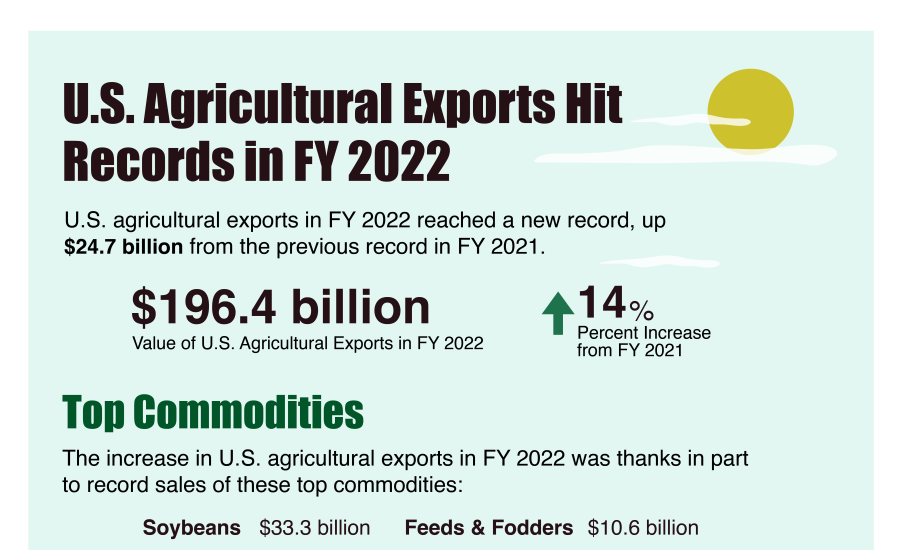Browse Data and Analysis
Filter
Search Data and Analysis
- 537 results found
- (-) Mexico
- Clear all
Amidst continuing supply chain concerns both in North America and around the globe, understanding how, where and when our bilateral trade with Mexico occurs is as important as ever for actors within food and agricultural sectors.
Total citrus production in Mexico across oranges, lemons/limes, and grapefruit is expected to decline in market year (MY) 2022/23 due to challenges such as damage to trees from increasingly severe weather conditions over multiple seasons, particularly in Northeastern producing states, and the rising costs of inputs and logistics for producers that is pressuring yields downward.
Cotton consumption in marketing year (MY) 2022/23 is forecast at 2 million bales, slightly lower than previously forecasted, a decrease which is projected to reduce imports of U.S. cotton.
Overall, Mexico’s market year (MY) 2022/23 deciduous fruit production is projected to remain steady year-to-year, with apple production increasing marginally by 1 percent, but from what is estimated to be a small MY 2021/22 crop.
FY2022 agricultural exports reach record levels.
Mexico has 1.2 million hectares of certified organic land in use. Eighty-six percent of all organic products are collected and harvested from natural habitats. In 2021, there were 48,641 certified organic producers in Mexico. The honey and coffee sectors have the most certified organic producers, while the avocado and berry industries produce the most in terms of value. Mexico represents an export market opportunity for U.S organic products, especially for younger and more affluent demographic groups.
The competent Mexican authorities which regulate food and agricultural imports and/or require official U.S. export certificates include the Secretariat of Agriculture (SADER), Secretariat of Health (SALUD), Ministry of Environment and Natural Resources (SEMARNAT), and the Secretariat of the Treasury and Public Credit (HACIENDA).
This document provides an overview of major Mexican agricultural and food-product laws and regulations, as well as related import standards and regulations. Some products may be subject to regulatory oversight by several different Government of Mexico (GOM) agencies. Post recommends that U.S. food and agricultural exporters work with experienced and established customs brokers and importers.
Even as Mexico's consumers face high core and food inflation, post sees both overall dairy production and imports rising in 2023. Mexico’s milk and cheese production is forecast to rise in 2023 due to increased investments in dairy operations in key producing areas.
On October 19, 2022, the Government of Mexico published a decree to temporarily exempt select importers from payment of import duties for certain goods and to facilitate administrative procedures as applied to the importation of select basic goods (mostly food items).
On September 20, 2022, the Congress of the State of Mexico (one of Mexico’s 32 states) approved the Law for the Promotion and Protection of Local Corn Varieties. The law states that the Government of the State of Mexico will cooperate with Mexico's federal authorities to ensure that local corn varieties in the state are free of genetically engineered (GE) corn.
FAS-Mexico forecasts a nearly 6 percent decrease in sugar production to 6.16 million metric tons raw value (MMT-RV) during marketing year (MY) 2022/23 due to lower rainfall levels and higher input prices. Production for MY2021/22 increased by 8.2 percent to 6.56 MMT-RV, mainly driven by an abundance of rainfall during critical growing months, lower input costs, and historically high prices creating incentives to maintain planted area.

